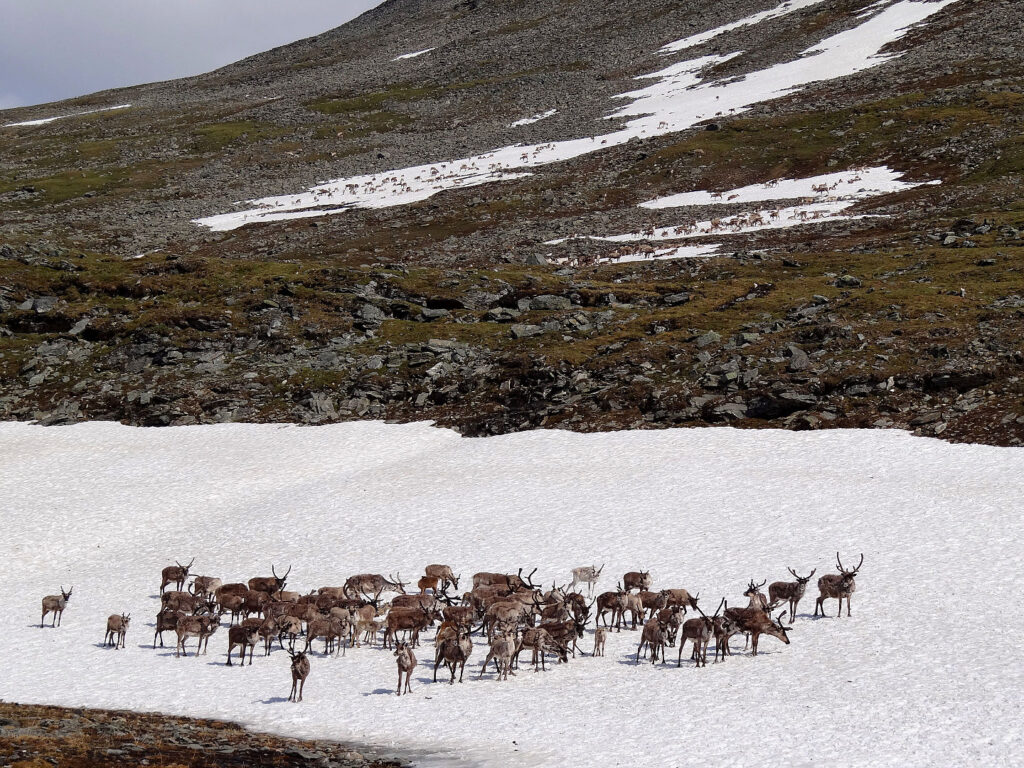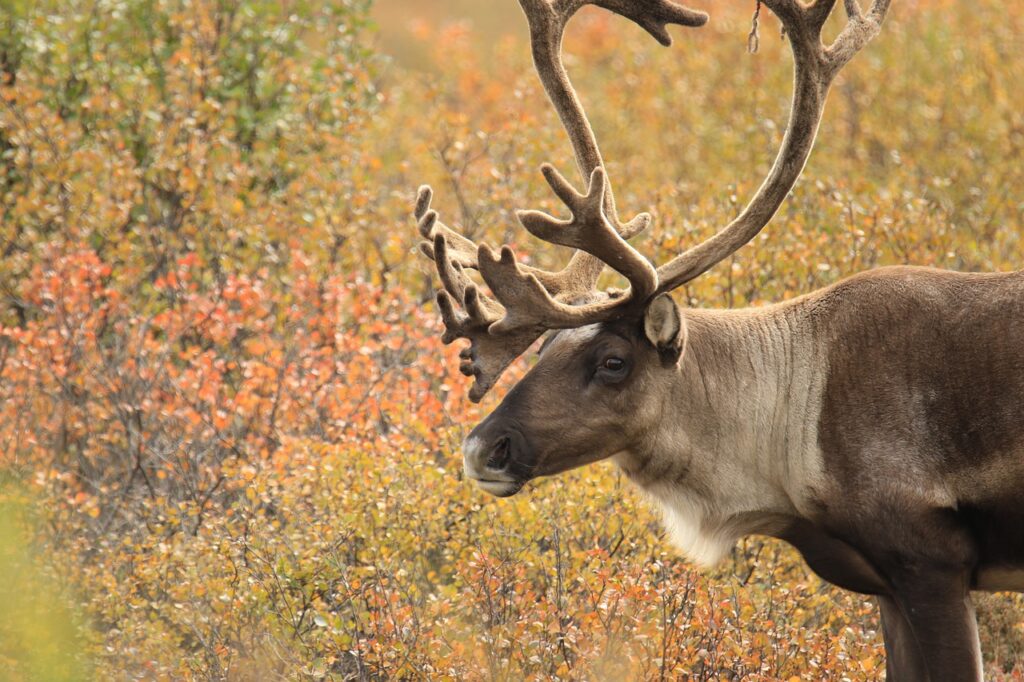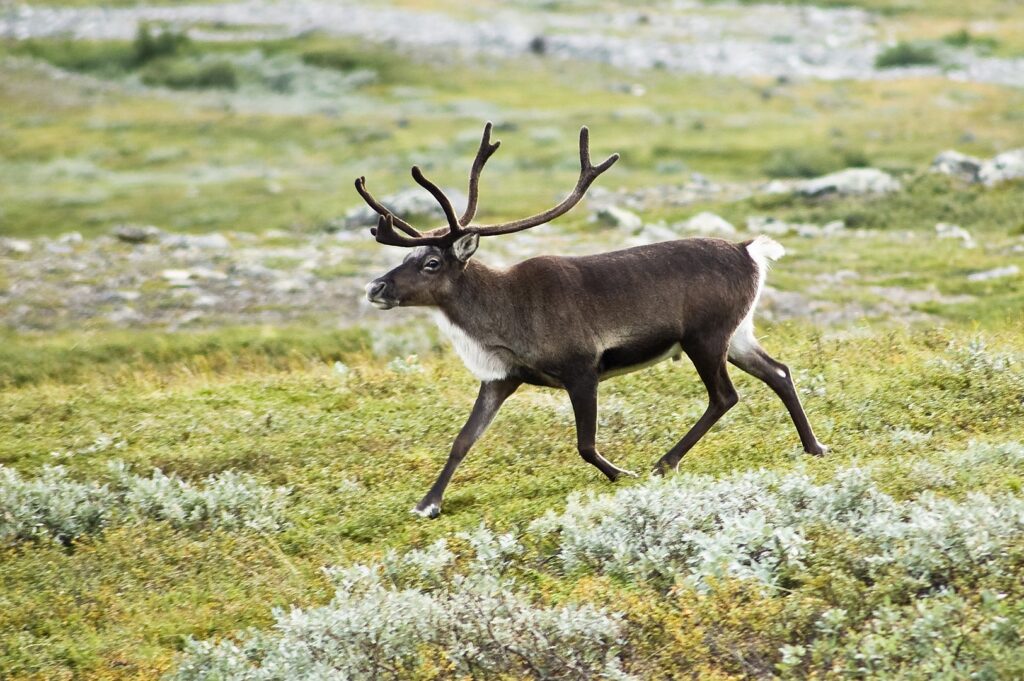Lorem ipsum dolor sit amet, consectetur adipiscing elit. Ut elit tellus, luctus nec ullamcorper mattis, pulvinar dapibus leo.
Neat to know ~ Creature of the week
Lorem ipsum dolor sit amet, consectetur adipiscing elit. Ut elit tellus, luctus nec ullamcorper mattis, pulvinar dapibus leo.
The Caribou (& Reindeer)
2020-12-08
– Because caribou and reindeer are both of the same species – Rangifer tarandus – their differences are sometimes overlooked. While they both inhabit the upper reaches of the Northern Hemisphere, reindeer are native to Asia and Europe, while caribou live in North America. Another important difference is that people have been herding reindeer for thousands of years. So, reindeer can be either wild or domesticated. Caribou, on the other hand, are only wild.
– From the tips of their spectacular antlers to the bottoms of their well-traveled feet, caribou and reindeer have adapted in remarkable ways to living in the harsh conditions of the far north.
Read on to learn more about the hardy, yet vulnerable, caribou.

Reindeer Herd, Norway
Freezing temps? Deep snow? Scarce food? There’s an adaptation for that!
- These sturdy members of the deer family have evolved to thrive in some of the most unforgiving regions on earth. Reindeer in Greenland, Scandinavia, and Russia (and a few in Alaska) and caribou in Canada and Alaska have to contend with frigid temperatures for much of the year. To battle the cold and wind, their coats have two layers. A layer of fine, soft wool covers the skin directly. A second coat is made of hollow hairs, which trap air inside them creating a layer of insulation that effectively holds in the warmth.
- Caribou are covered from head to toe in hair. Even their hooves are hairy! This adaptation gives them traction on slippery, frozen ground.
- Their hooves change depending on the season. When the ground is wetter and muddier in the warmer months, the hooves broaden and the foot pads become cushiony to be able to avoid sinking into the soft ground. But in the cold months, when the ground is frozen, their hooves become hard and sharp around the edges. This allows the caribou to step through deep snow and ice without slipping. The hardened hooves can also scrape through snow, to get to food buried below.
- And how, you might ask, does the caribou even know where to dig for its meal, if the food source is under the snow? That’s thanks to its unusual nose. It has a highly acute sense of smell that can detect food hidden deep beneath the snow cover.
- A caribou’s keen sense of smell also helps it determine where danger might be lurking and guides it in the right direction when it is traversing the wide expanses of the arctic tundra.
- Caribou’s noses are covered with hair. This warms the icy air before it rushes into their lungs.
On-and-off antlers
- Of all deer species, caribou and reindeer have the biggest antlers relative to the size of their bodies. Both females and males have antlers – a male’s can get up to 50 inches (about 130 cm) in length and a female’s up to 20 inches (50 cm).
- The antlers fall off and then grow back larger year after year. Males start growing theirs in February and then drop them in November. Females’ antlers start to grow in May. Unlike the males, they keep their antlers throughout the winter, until their young are born the following spring. They use their antlers to defend areas of food during the winter months when they are pregnant.
- Females with the biggest antlers are dominant.
- The same is true of males, who use their antlers to defend against predators and to compete with other males during the breeding seasons.
Follow the food!
- Caribou must migrate in order to survive. In spring, they travel north in huge herds to the tundra where plants grow briefly, but profusely, in the short summer season. During the warmest weeks of the year, caribou graze to their heart’s content — an adult caribou can eat more than 10 pounds of food in a single day — and the females give birth.
- As fall and winter make their return, the caribou begin their journey south. The females go first, accompanied by their recently-born calves. The males follow a few weeks later with the young that were born in the previous year. The herd spends the coldest months of the year at lower elevations, in valleys that offer some shelter. They eat lichen, which they find under the snow, as well as dry grass.
- The yearly migration routes of caribou are the longest of any other large land animal, stretching almost 1000 miles (1600 km) round trip.
Sticking together
- Caribou live in herds that can range in size from 10 to 100. Migrating herds can be much bigger, with tens of thousands – even hundreds of thousands – of caribou traveling together.
- When herds reach the higher summer grazing grounds, female caribou give birth to the newest members of the group. Usually, mothers have just one calf at a time.
- A newborn caribou calf must be scrappy and tough. Within an hour of its birth, it is able to stand. Just a few hours later, it can keep up with its mother, never leaving her side. After one day, the calf is nimble enough to outrun a person. The calf lives from its mother’s milk at the beginning of its life. But already after a week, it is eating solid food, too. In only two weeks’ time, the calf doubles in size.
- On average, caribou live for about 15 years.
Fewer and fewer caribou
- There is safety in numbers. In large herds, there are many eyes on the look-out for danger and many noses that can sense a nearing predator. Adult caribou who are strong and healthy face few natural predators. Golden eagles may prey on calves. Larger predators, like wolves, go after the weakest members in a herd. But by far the biggest threats to caribou are climate change and habitat loss.
- These majestic creatures are currently identified as a “vulnerable species.” This means that they are close to being considered endangered, and at high risk of becoming extinct in the wild.
- The arctic is warming at an alarming rate. This is altering the environment much more quickly than animals like caribou are able to adapt. Higher temperatures in the summer have meant an increase in the number of biting insects and parasites, resulting in rapidly-spreading diseases among caribou. Climate change is also altering seasonal cycles, which affects the caribou’s ability to access food.
- Terrain traveled by caribou on their yearly migrations is increasingly becoming changed by human activities, making these lands inaccessible or dangerous to the caribou and disrupting their natural migratory cycles.
- The expansion of industry, in particular mining, on caribou ranges has resulted in disastrous habitat loss for the now-shrinking herds.
- We might see images of thousands of caribou and think that there is no way they are in danger of dying out. But these pictures are deceptive. Populations are getting smaller and smaller. And worst of all, there is no sign of a turnaround. That can only happen if humans retreat from the lands upon which the caribou depend, and if we all start to seriously address the ever more urgent issue of climate change affecting the planet as a whole.
Sources: National Geographic, “Caribou,” https://www.nationalgeographic.com/caribou/; National Wildlife Federation, “Reindeer: 12 Fascinating Facts About These Amazing Creatures,” https://blog.nwf.org/reindeer-twelve-fascinating-facts; December 21, 2010; San Diego Zoo, “Reindeer: Rangifer tarandus,” https://animals.sandiegozoo.org/animals/reindeer; WWF, “Caribou,” https://wwf.ca/species/caribou/.

